QuestionMy mother breeds and raises sun conures. She has one set that just had 3 babies, but the male killed 2 of the 3 babies by biting and pecking at them and 1 of them my mother thinks he ate because all she found left was part of the beak and neck. Why do you think he acted like that? My mother thinks it might be jealousy but she wants to know for sure so it wont happen again. I would greatly appreciate it if you could answer me back. Thank you!
AnswerHi,
It is hard to say why he did that. But, I probably wouldn't recommend breeding him in the future- or at least giving this pair a full check up from a vet and waiting a year or two until you try again.
Here are some articles on mate aggression- there is more written on aggression between adult birds. It is hard to find information on aggression towards babies. It normally isn't too common. So I would definitely recommend consulting with an avian vet and also some more experienced bird breeders in your area for help. The following information might help you with your situation of aggression as well. Hopefully some of these articles/info. will help you and your mother further:
http://teresasbirds.com/parrot-breeding-information.html
And here are some tips I found on reducing mate aggression in birds:
The most important step to stopping mate aggression seems to be aviary size....more information is below.
One tool to fight mate aggression is to have an observation camera, enabling you to observe the cockatoos without being present. This can sometimes help to alert you to problem behavior in the earlier stages. It can also give a false sense of security, missing tell tale signs of trouble. You may observe obvious aggression by the male or less obvious flying to the ground by the hen to escape a male. Without a camera you can see if two cockatoos are sitting on opposite ends the perch, things are not right, they are not good, separate the birds.
Diet is important. If a cockatoo is not feeling well, due to a nutrient poor diet, he could become aggressive. Birds should be fed a variety of foods, including some fresh foods on a daily basis.
If possible let the cockatoos do their own mate selecting. They may not all pair up, but it would be better if they did not pair up than to have mate aggression occur. If for some reason you are unable to allow birds to choose mate themselves, then try pairing like personalities such as aggressive males with aggressive hens, laid back males with sweet hens etc.
Communication skills can be vital. Since these skills are learned from parents and flock groups, using hand-raised cockatoos for breeding should be avoided. Communication skills of parent raised birds can be better but they still lack the education of a flock language. Wild caught birds would make the best breeders.
Supply multiple wooden nest boxes initially, to let them establish their nest the way they want it to be, and the location they want it in. Australian aviaries provide two nest logs to breeding pairs.This way if one log is rejected, they have a second choice which helps to avoid frustration which could lead to aggression. Also supply toys, fresh branches and chewing materials at all times, to help keep the male busy. A wild cockatoo would never have time to become bored and a bored male in captivity with nothing but time on his hands can turn into a frustrated and aggressive male.
Some breeders have had success leaving same species cockatoos housed side by side (in large outdoor flights), giving the male an outlet for his aggression, but this seems to only work, if cockatoos pairs have a hidden area, when their nest hole is located. A secure and hidden area away from and seemingly out of sight of neighbors.
Make sure that after a nest box of their choice has been selected, that it has an escape, essentially two entrances so that the hen cannot be trapped inside by the male. Although a two entrance box, does not do a lot to assure a hens safety from a ranting determined male. Also do not add perches to the nest box, to encourage a male to hold a hen captive.
If the males wings are kept clipped and the hen is left flighted, then she can escape easier. Use good judgement in this case though...if the male is so aggressive that he needs his wings clipped, ask yourself if he should be in a breeding situation at all. This will not help to prevent aggression in the case of a male attacking a female in the nestbox. ALL nestboxes should have escape holes. Some male cockatoos have been known to be infuriated when clipped, not easily being able to approach a hen. A few of these males have taken the tactic of clipping off the hens primaries, leaving her unable to escape him.
Provide at least two feeding and water stations to avoid a situation where the male will not let the hen access food.
Aviary size plays perhaps the most important role for stopping mate aggression! Some aviaries have been expanded to 20 feet long on average but a higher success rate, at avoiding male aggression has been achieved in aviaries that are 30 to 40 feet long by 15 to 20 feet wide. I read one recommendation that simply stated cockatoo aviary flights need to be large enough to provide *some* flight. Obviously whatever size of cage this is referring to, it would not be of adequate size to stop mate aggression. Companion bird owners are told that if they cannot provide the needed space to provide a large enough cage for a cockatoo, then they should not get one. This also should be applied to breeders, if you cannot provide adequate aviary space to avoid mate aggression, then you should be looking into a different species. It has been noted by some breeders that if the aviary is to large, then their birds will not breed. This is because the male can no longer catch the hen. If the male is having to chase the hen, chances are that the pair is not paired up properly OR the male is to aggressive to be in a breeding environment and should be removed. He is not adjusting to a captive environment and the question might be asked, if he remains aggressive, is this the type of bird that should be passing on his genes? Is he actually capable of producing even tempered/pet quality babies or will his babies be aggressive later in their life to their caretakers and end up being passed from home to home? Another question about large aviaries was about whether or not they would be suitable in cold northern climates. There are breeders up north in cold climates who have provided large aviaries and the birds do very well. These birds also have a sheltered area within the aviary.
If you feel that a pair is not getting along, that they seem to squabble a lot, then IMMEDIATELY separate them, please.
If the male is acting aggressive, you might want to try a temporary separation. If you try this, do NOT remove the female from the aviary. Always remove the male from the aviary. If you remove the female, then the male could become territorial and when you reintroduce the female, she could possibly be attacked by the male as an intruder. Once separated you can watch for signs from the female that she is ready to breed, such as working the nest box or calling to the male. If a female should become ill and needs to be taken out of the aviary, then also remove the male at that time and then reintroduce both birds back to the aviary at the same time. You might consider reintroducing these birds by housing them next to each other in separate cages for a while, letting them meet eatch other all over again, before turning them lose into their old aviary.
Never put the same species of cockatoo in adjoining aviaries. Ideally the same cockatoos species males should not have
sight of each other as this can result in the males feeling challenged, keeping them emotionally on edge.
If a male has ever killed a mate, he should be permanently excluded from any breeding.
Hopefully, with some work, male aggression can be avoided by finding solutions, and by us making the
commitment to our captive breeding cockatoos to do our best for both, hen and cock. And when a problem arises, we will look first to ourselves, ask what we might be doing wrong, what we can better provide them, rather than blaming the male and mutilating him for life.
Again- I hope this helps.
-Maggie

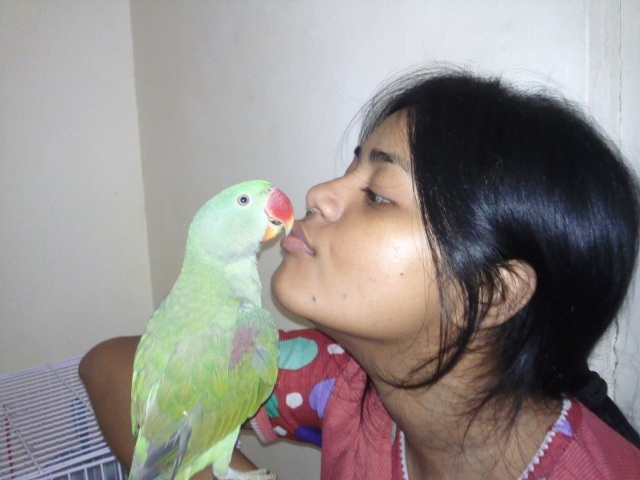 can i give my parrot chole(chana) called in hindi
Question
my little chaddi alexa
dear sir,
can give chan
can i give my parrot chole(chana) called in hindi
Question
my little chaddi alexa
dear sir,
can give chan
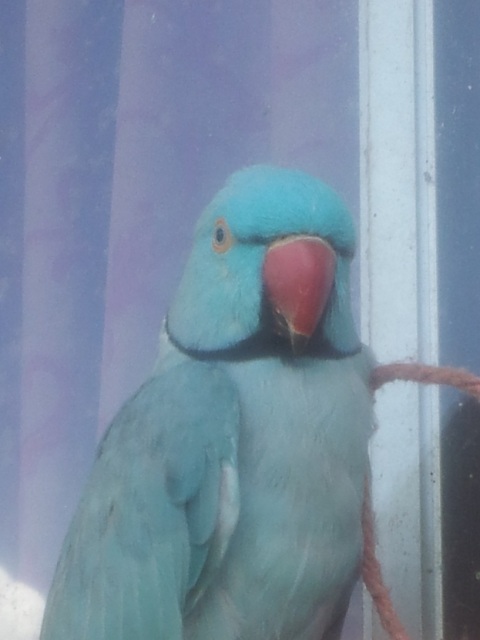 RE: Indian Ringneck probems
Question
Indy our Ringneck
Thank you for your he
RE: Indian Ringneck probems
Question
Indy our Ringneck
Thank you for your he
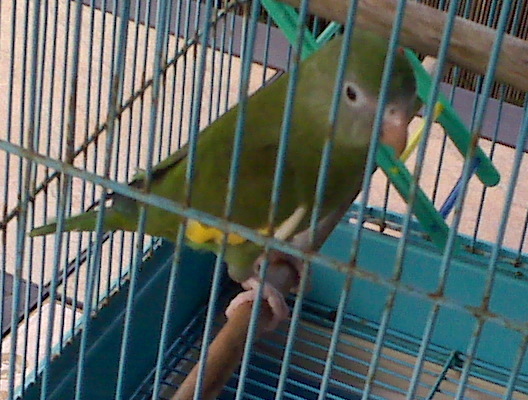 What type of parrot is this?
Question
Friendly bird
A week ago ths small parrot flew
What type of parrot is this?
Question
Friendly bird
A week ago ths small parrot flew
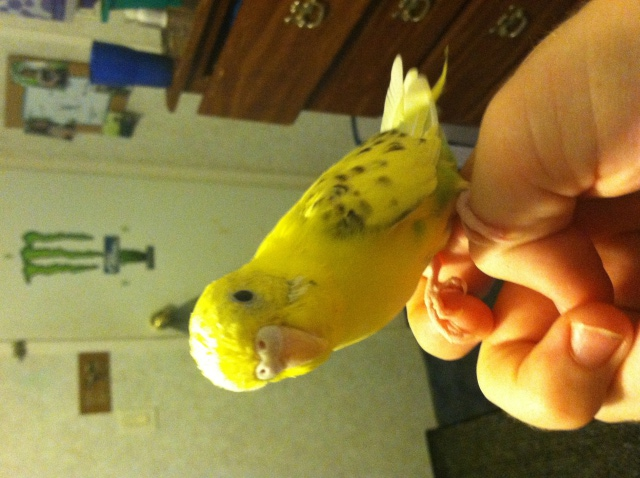 Parakeet gender
Question
Parakeet
Hi, I looked for an expert und
Parakeet gender
Question
Parakeet
Hi, I looked for an expert und
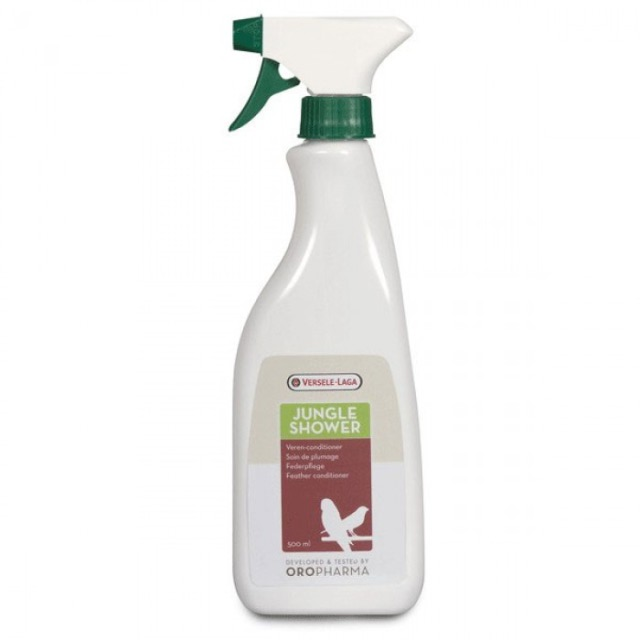 Indian Ringneck Health Issue
QuestionI have an Indian Ringneck who had been neglecte
Indian Ringneck Health Issue
QuestionI have an Indian Ringneck who had been neglecte